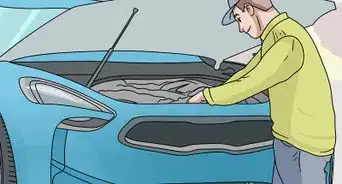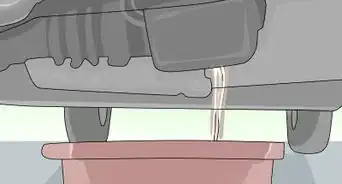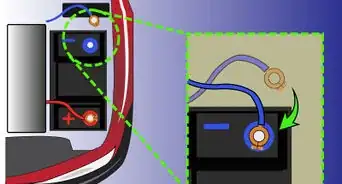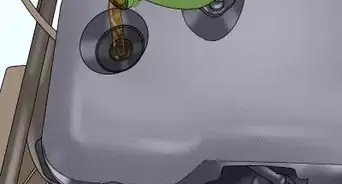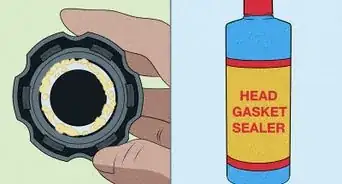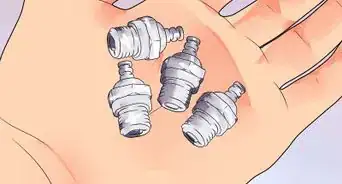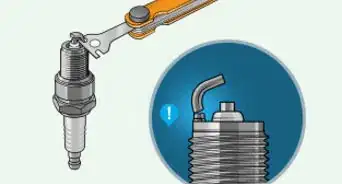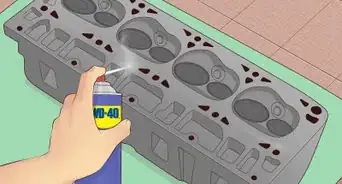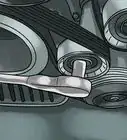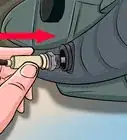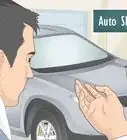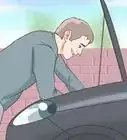This article was co-authored by Duston Maynes. Duston Maynes is an Automotive Repair Specialist at RepairSmith. Duston specializes in leading a team that handles a variety of automotive repairs including replacing spark plugs, front and rear brake pads, fuel pumps, car batteries, alternators, timing belts, and starter motors. Duston holds an Associate’s degree in Automotive/Diesel Technology from The Universal Technical Institute of Arizona and is a Certified Diagnostic Technician and Automobile Mechanics Technician through BMW STEP. RepairSmith received The 2020 Big Innovation Award by Business Intelligence Group and The Startup of the Year by the American Business Awards. RepairSmith was also included in Built in LA’s 50 Startups to Watch and The Business Intelligence Group’s 52 Names Leading the Way in Customer Service. RepairSmith offers in-home services to provide car owners convenient and complete auto repair everywhere.
This article has been viewed 147,495 times.
The belts in your car's engine drive such components as the air conditioning compressor, power steering pump, alternator and water pump. Older cars used separate V-belts for each component, while newer cars use a single serpentine belt to drive them all. Belts wear and tear over time, and a belt's failure could mean serious damage to the engine or its systems. You need to check your belts on a regular basis; here's what to look for.
Steps
-
1Listen for squealing sounds from the engine when you drive. These sounds likely mean one or more belts are worn, loose or damaged.
-
2Check belts for signs of wear. You need to do more than just visually inspect the belts. Pinch, squeeze and twist them, looking for cracks, fraying, splits or brittle places.[1]
- On a serpentine belt, also look for missing grooves or places where the belt's layers have separated.[2]
Advertisement -
3Check your belts for places where the rubber is slick or glazed in appearance. Slick spots can cause a belt to slip and may be precursors to overheating and cracking.
-
4Inspect the pulleys. Look for a buildup of rubber deposits, as well as worn spots that could catch the belt and cause it to break.[3]
- Also check the belts' alignment on the pulleys. They should line up straight on the pulleys.
-
5Check the belt tension. Check the tension on the longest length of the belt; there should be no more than one-half to one inch (1.25 centimeters to 2.5 centimeters) of give.[4]
Community Q&A
-
QuestionI have a dead rat in my car and it stinks. What can I do to get the smell out?
 Community AnswerGet the rat out. Then wash your engine with petrol or a chemical called prepsol -- it's a cleaning product.
Community AnswerGet the rat out. Then wash your engine with petrol or a chemical called prepsol -- it's a cleaning product. -
QuestionHow can I check the tension on a belt?
 Community AnswerTwist it if you do not have a tensioner test. The longer you can twist it, the belt is loose, the less it twists, the belt is good. You must have a good vision of comparing.
Community AnswerTwist it if you do not have a tensioner test. The longer you can twist it, the belt is loose, the less it twists, the belt is good. You must have a good vision of comparing.
Warnings
- If the V-belt for your water pump breaks, your engine temperature will rise rapidly. If the V-belt for your alternator breaks, your alternator no longer will supply power to your battery to keep it charged, and the compressor for your air conditioner will also quit. If your car has a serpentine belt and it breaks, all these things will happen. If your car starts to overheat, pull over immediately.⧼thumbs_response⧽
- Many of the new composite belts will not show signs of wear until they break.⧼thumbs_response⧽
References
- ↑ https://www.consumerreports.org/car-repair-maintenance/how-to-inspect-car-belts-and-hoses/
- ↑ https://www.familyhandyman.com/automotive/car-maintenance/serpentine-belt-how-to-check-for-wear/
- ↑ https://www.youtube.com/watch?v=axAltpW8wR4
- ↑ https://www.howacarworks.com/electrical-systems/checking-adjusting-and-refitting-drive-belts
- ↑ https://www.knowyourparts.com/technical-resources/engine/when-to-replace-serpentine-belts/
- http://www.cartalk.com/content/features/Summer-Driving-Tips/cooling.html

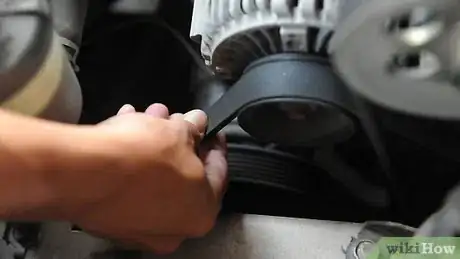

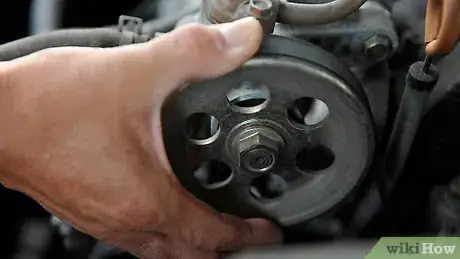
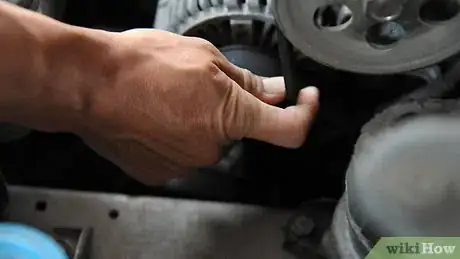
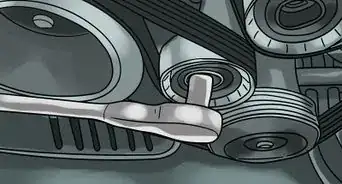
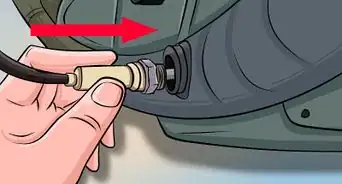
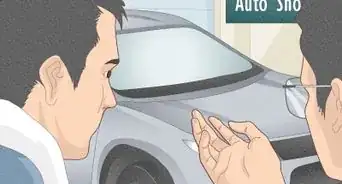
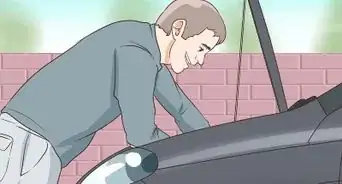
-Beetle-Step-5-Version-3.webp)
